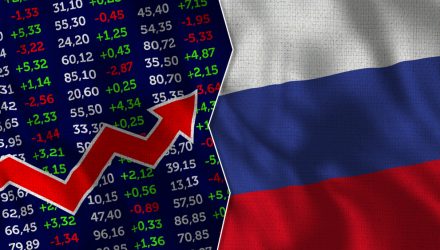Fixed income investors know that yield is hard to come by these days domestically, so it makes sense to look overseas. One place that’s piquing the interest of fixed income investors is Russian bonds.
“Foreign investors are piling back into Russian bonds, attracted by high yields and the country’s relatively strong finances compared with emerging-market peers,” a Wall Street Journal report noted. “Despite a heavy reliance on oil exports and tense relations with the West, investors say yields on Russian government bonds are attractive given its ability to withstand oil-price volatility. Russia marked its eighth straight week of inflows into its bonds on July 23, according to data from fund tracker EPFR Global, only outdone by China.”
“Russia’s ruble bonds have extremely high real rates, once you adjust by macroeconomic fundamentals,” said Joseph Mouawad, a fund manager in the international bonds team at Carmignac. “Russian debt is actually one of our favorite EM debts at the moment.”
The report noted that Russia has a low debt percentage per GDP compared to other emerging markets countries in addition to strong central bank reserves.
“We’ve been generally positive on Russia over the past year or so,” said Kaan Nazli, economist and portfolio manager at Neuberger Berman. “Mainly because, although they’re not orthodox on foreign policy, they’re pretty serious on economic policy.
When it comes to looking at single country opportunities with exchange-traded funds (ETFs), there’s the Franklin FTSE Russia ETF (FLRU) for Russia exposure. FLRU seeks to provide investment results that closely correspond, before fees and expenses, to the performance of the FTSE Russia RIC Capped Index (the FTSE Russia Capped Index).
Under normal market conditions, the fund invests at least 80% of its assets in the component securities of the FTSE Russia Capped Index and in depositary receipts representing such securities. The FTSE Russia Capped Index is based on the FTSE Russia Index and is designed to measure the performance of Russian large- and mid-capitalization stocks.
Here are a pair of other funds to consider:
- VanEck Vectors Russia ETF (RSX): seeks to replicate as closely as possible, before fees and expenses, the price and yield performance of the MVIS® Russia Index. The index includes securities, which may include depositary receipts, of Russian companies. A company is generally considered to be a Russian company if it is incorporated in Russia or is incorporated outside of Russia but has at least 50% of its revenues/related assets in Russia. Such companies may include medium-capitalization companies.
- VanEck Vectors Russia Small-Cap ETF (RSXJ): seeks to replicate as closely as possible, before fees and expenses, the price and yield performance of the MVIS® Russia Small-Cap Index. The index includes securities of Russian small-capitalization companies. It will normally invest at least 80% of its total assets in securities of small-capitalization Russian companies.
For more market trends, visit ETF Trends.








